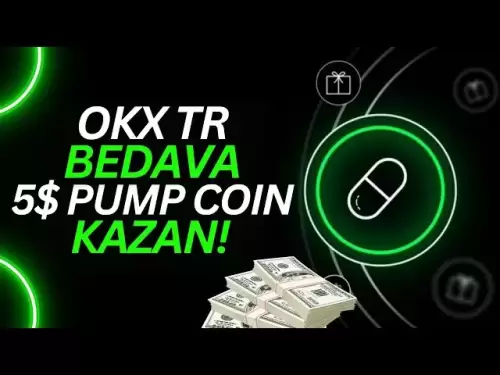-
 Bitcoin
Bitcoin $117400
-0.46% -
 Ethereum
Ethereum $3768
0.60% -
 XRP
XRP $3.551
2.09% -
 Tether USDt
Tether USDt $1.000
0.00% -
 Solana
Solana $203.2
11.30% -
 BNB
BNB $770.9
1.92% -
 USDC
USDC $0.9999
0.01% -
 Dogecoin
Dogecoin $0.2709
-0.02% -
 Cardano
Cardano $0.9024
4.49% -
 TRON
TRON $0.3139
0.60% -
 Hyperliquid
Hyperliquid $45.60
-1.41% -
 Stellar
Stellar $0.4730
-1.34% -
 Sui
Sui $4.025
2.15% -
 Chainlink
Chainlink $19.79
2.19% -
 Hedera
Hedera $0.2724
-2.39% -
 Avalanche
Avalanche $25.93
3.05% -
 Bitcoin Cash
Bitcoin Cash $524.0
-1.83% -
 Shiba Inu
Shiba Inu $0.00001558
0.50% -
 Litecoin
Litecoin $116.7
-0.30% -
 UNUS SED LEO
UNUS SED LEO $8.996
0.00% -
 Toncoin
Toncoin $3.334
1.83% -
 Polkadot
Polkadot $4.506
0.34% -
 Uniswap
Uniswap $10.99
4.83% -
 Ethena USDe
Ethena USDe $1.001
0.03% -
 Pepe
Pepe $0.00001461
3.17% -
 Monero
Monero $320.3
-1.01% -
 Bitget Token
Bitget Token $4.935
0.36% -
 Dai
Dai $0.9998
0.00% -
 Aave
Aave $322.4
-1.25% -
 Bittensor
Bittensor $455.6
9.33%
How much crypto do I need to stake to be a validator?
To become a blockchain validator, you must stake a minimum amount of crypto, which varies by network—like 32 ETH for Ethereum 2.0 or a few hundred ADA for Cardano.
Jul 22, 2025 at 09:00 am

Understanding the Role of a Validator in Blockchain Networks
To determine how much crypto you need to stake to be a validator, it’s essential to first understand what a validator does. In proof-of-stake (PoS) blockchains, validators are responsible for verifying transactions, creating new blocks, and maintaining the network’s security. Unlike miners in proof-of-work systems, validators are chosen based on the amount of crypto they are willing to stake as collateral. This staked amount acts as a guarantee that the validator will act honestly and follow the rules of the network.
Minimum Staking Requirements Vary by Blockchain
The amount of crypto required to become a validator is not universal — it varies significantly depending on the blockchain protocol you're interested in joining. For example:
- Ethereum 2.0: Requires a minimum of 32 ETH to become a validator.
- Solana: Typically requires several thousand SOL, though the exact number fluctuates with network conditions.
- Polkadot: Requires a minimum stake that is often in the tens of thousands of DOT tokens.
- Cardano (ADA): Has a much lower entry barrier, with some pools allowing participation with as little as a few hundred ADA.
Each blockchain sets its own threshold to ensure that validators have a significant financial incentive to act in the network's best interest.
Factors Influencing Staking Requirements
Several factors influence the minimum staking amount required to become a validator:
- Network Security Needs: Blockchains with higher transaction throughput or larger user bases often require more stake to deter malicious behavior.
- Token Value: The dollar value of the native token affects the real-world cost of staking. A network with a high-value token may require less in quantity but more in fiat terms.
- Decentralization Goals: Some networks lower the barrier to entry to allow more participants, while others raise it to reduce the number of validators and improve efficiency.
These dynamics mean that the required staking amount isn’t static and may change over time as the network evolves.
Technical and Operational Requirements
Becoming a validator isn’t just about staking a certain amount of crypto — it also involves technical expertise and operational responsibility. Validators must:
- Run a full node 24/7 with minimal downtime.
- Maintain secure infrastructure to prevent attacks.
- Regularly update software to stay compatible with network upgrades.
- Understand slashing conditions and avoid them to prevent losing staked funds.
Failure to meet these requirements can result in partial or full loss of staked assets, which is why many individuals opt to delegate their stake to professional validators rather than run their own.
Alternative Paths: Delegating Instead of Validating
If the required stake amount is too high or the technical demands are overwhelming, users can still participate in PoS networks by delegating their tokens to an existing validator. Delegation allows token holders to contribute to network security and earn staking rewards without the responsibility of maintaining a node. However, they must choose a trustworthy validator to avoid risks like misbehavior or slashing.
Validators, in turn, earn a portion of the rewards generated by the delegated stake, often charging a small fee for their services. This model enables broader participation in staking, even for those with smaller holdings.
How to Calculate Your Staking Needs
To calculate how much crypto you need to stake to become a validator, follow these steps:
- Identify the target blockchain: Each network has its own validator requirements.
- Check the current minimum stake: This information is usually available in the official documentation or community forums.
- Assess your risk tolerance: Consider how much you’re willing to lock up and potentially lose due to slashing.
- Evaluate hardware and operational costs: Factor in server costs, bandwidth, and maintenance.
- Review expected rewards: Use staking calculators to estimate potential returns and compare them with the required stake.
This approach ensures that you make an informed decision based on your financial and technical capacity.
Commonly Asked Questions
What happens if a validator gets slashed?
Slashing is a penalty applied when a validator misbehaves or fails to perform duties correctly. The network deducts a portion of the staked crypto as a punishment, which can reduce earnings or even eliminate the stake entirely in severe cases.
Can I unstake my crypto anytime?
Most PoS networks enforce a lock-up period during which staked tokens cannot be withdrawn. This period varies by blockchain and may last from days to weeks, depending on network rules.
Do I need to stake all my tokens at once?
No, many networks allow validators to gradually increase their stake over time. However, to activate validator status, you must meet the minimum requirement initially.
Is running a validator profitable?
Profitability depends on several factors including staking rewards, inflation rates, token price, and operational costs. While some validators earn consistent returns, others may break even or even lose money if not managed efficiently.
Disclaimer:info@kdj.com
The information provided is not trading advice. kdj.com does not assume any responsibility for any investments made based on the information provided in this article. Cryptocurrencies are highly volatile and it is highly recommended that you invest with caution after thorough research!
If you believe that the content used on this website infringes your copyright, please contact us immediately (info@kdj.com) and we will delete it promptly.
- MoonBull's Whitelist Mania: Your Last Shot at 100x Crypto Gains?
- 2025-07-22 10:30:12
- Meme Coins in 2025: Explosive Gains or Fading Fad?
- 2025-07-22 10:30:12
- Kim Keon-hee Crypto Probe: Scandal Rocks South Korea's Political Scene
- 2025-07-22 10:50:12
- ETH Holders in Profit: Value Surge Fuels Bullish Sentiment
- 2025-07-22 09:30:13
- NEAR Protocol's AI Leap: Double-Digit Gains and Future Potential
- 2025-07-22 09:30:13
- Cryptos, Meme Coins, Buy Now: Riding the Wave of Hype
- 2025-07-22 08:30:13
Related knowledge

What is the difference between CeFi and DeFi?
Jul 22,2025 at 12:28am
Understanding CeFi and DeFiIn the world of cryptocurrency, CeFi (Centralized Finance) and DeFi (Decentralized Finance) represent two distinct financia...

What is the difference between a sidechain and a Layer 2?
Jul 20,2025 at 11:35pm
Understanding the Concept of SidechainsA sidechain is a separate blockchain that runs parallel to the main blockchain, typically the mainnet of a cryp...

What is the Inter-Blockchain Communication Protocol (IBC)?
Jul 19,2025 at 10:43am
Understanding the Inter-Blockchain Communication Protocol (IBC)The Inter-Blockchain Communication Protocol (IBC) is a cross-chain communication protoc...

How does sharding improve scalability?
Jul 20,2025 at 01:21am
Understanding Sharding in BlockchainSharding is a database partitioning technique that is increasingly being adopted in blockchain technology to enhan...

What is the "crypto trilemma" of scalability, security, and decentralization?
Jul 19,2025 at 06:28pm
Understanding the Concept of the Crypto TrilemmaThe crypto trilemma refers to the challenge of simultaneously achieving scalability, security, and dec...

What is a cliff and vesting schedule in tokenomics?
Jul 20,2025 at 10:28am
What Does a Cliff Mean in Tokenomics?In tokenomics, a cliff refers to a specific period during which token holders are not allowed to access or transf...

What is the difference between CeFi and DeFi?
Jul 22,2025 at 12:28am
Understanding CeFi and DeFiIn the world of cryptocurrency, CeFi (Centralized Finance) and DeFi (Decentralized Finance) represent two distinct financia...

What is the difference between a sidechain and a Layer 2?
Jul 20,2025 at 11:35pm
Understanding the Concept of SidechainsA sidechain is a separate blockchain that runs parallel to the main blockchain, typically the mainnet of a cryp...

What is the Inter-Blockchain Communication Protocol (IBC)?
Jul 19,2025 at 10:43am
Understanding the Inter-Blockchain Communication Protocol (IBC)The Inter-Blockchain Communication Protocol (IBC) is a cross-chain communication protoc...

How does sharding improve scalability?
Jul 20,2025 at 01:21am
Understanding Sharding in BlockchainSharding is a database partitioning technique that is increasingly being adopted in blockchain technology to enhan...

What is the "crypto trilemma" of scalability, security, and decentralization?
Jul 19,2025 at 06:28pm
Understanding the Concept of the Crypto TrilemmaThe crypto trilemma refers to the challenge of simultaneously achieving scalability, security, and dec...

What is a cliff and vesting schedule in tokenomics?
Jul 20,2025 at 10:28am
What Does a Cliff Mean in Tokenomics?In tokenomics, a cliff refers to a specific period during which token holders are not allowed to access or transf...
See all articles

























































































